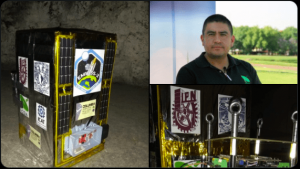RACHEL FELTMAN
THE WASHINGTON POST
When massive stars die, they sometimes go supernova — exploding in incredible bursts of energy. Scientists haven’t spotted one in our own galaxy since 1604, and that explosion happened about 20,000 light-years away. But now researchers have evidence of two supernovas that occurred relatively recently, cosmically speaking, and happened just 300 light-years away. The explosions would have been visible during the day — as bright as the moon — for weeks at a time. That’s long before our own species showed up, but it’s likely that other humans were able to enjoy the light show. It may have even influenced their evolution.
In a pair of studies published Wednesday in Nature, researchers report that a radioactive isotope that remains on Earth today most likely came from the debris of these ancient exploding stars.
The general consensus is that a supernova would have to happen within 30 light-years for Earth to see any drastic damages, so our planet was perfectly safe when the explosions took place about 2.3 million and 1.5 million years ago, respectively. But the explosions, both about nine times as massive as the sun, left their mark.

Our planetary scars come in the form of an iron isotope that can’t be created on Earth but is commonly manufactured in the cores of dying stars. Traces of iron-60 isotopes were found in the ocean crust more than a decade ago, and scientists knew they must have come from space. But when and how remained an open question.
In one of the new studies, a team led by Australian National University’s Anton Wallner provide evidence that these isotopes are spread out globally. Based on the amount of the isotope, his team thinks the most likely source of the stuff is the (relatively) close explosion of a star.
The second study, led by Dieter Breitschwerdt of the Berlin Institute of Technology, found a likely source for the isotopes. The team suggests that there were multiple explosions, which occurred every million years or so as a cluster of stars — one that still exists today — slipped past our solar system.
Iron-60 has a half-life of 2.6 million years, which means that half of the original quantity decays in that time. So while Breitschwerdt and his colleagues believe this transiting star cluster produced many relatively close supernovas, only the ones that were both close and quite recent have left notable traces.
Breitschwerdt, who likes to refer to his work as “galactic archaeology,” believes that studying supernovas will help us understand the evolution of the universe.
“All the chemical elements we know of except for hydrogen and helium come from these stars,” he told The Washington Post. Understanding where and when these explosions occurred will allow scientists to wind back the clock and see how they might have changed the landscape of the space around them. And that could help us understand how planets full of star-born elements — like our own — come to be.
Breitschwerdt hopes that these explosions might have implications in human evolution, too. Every atom in the human body that isn’t hydrogen or helium came from one supernova or another, but he’s curious to know whether these more recent explosions had direct effects on Earth’s fauna.
Understanding where and when these explosions occurred will allow scientists to wind back the clock and see how they might have changed the landscape of the space around them. And that could help us understand how planets full of star-born elements — like our own — come to be.”
-Dieter Breitschwerdt, Berlin Institute of Technology
“I’m not a biologist, so I’ll be very careful, but there might be some connection, because as we know, it falls exactly into a time span that was very important in evolution,” he said. “Perhaps there were some important climactic changes, or maybe even some important mutations — of course, this is pure speculation.”
Adrian Melott, an astrophysicist from the University of Kansas who wasn’t involved in either study but wrote a commentary on them for Nature, called the work “slam-dunk” evidence and plans on looking for earthly events that may be tied to the big booms.
“Our local research group is working on figuring out what the effects were likely to have been,” he said in a statement. “We really don’t know. The events weren’t close enough to cause a big mass extinction or severe effects, but not so far away that we can ignore them either. We’re trying to decide if we should expect to have seen any effects on the ground on the Earth.”
In his commentary for Nature, Melott points out that the supernovas seem to coincide with periods of temperature decrease, but for now it’s impossible to say whether the stellar explosions caused the climate to shift.










